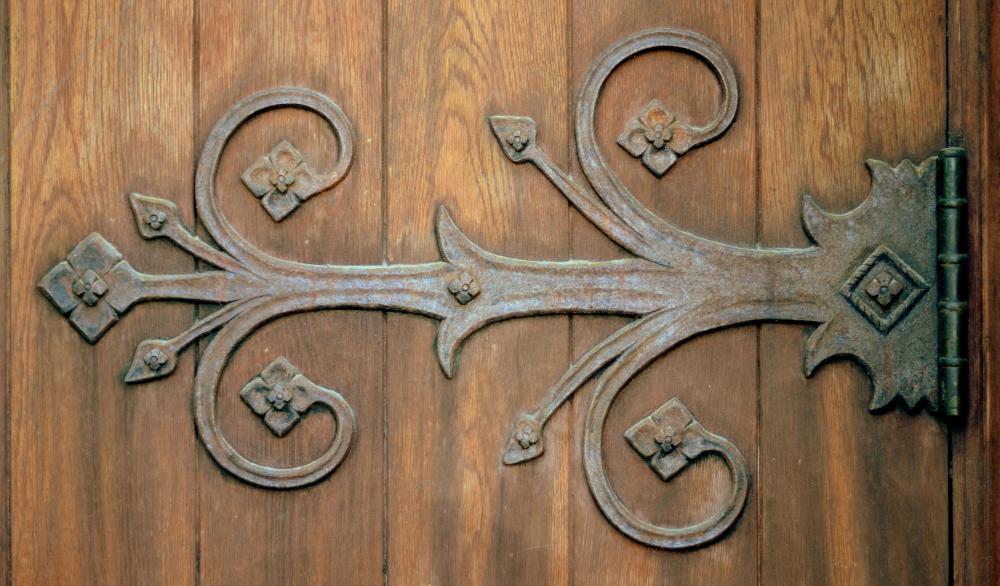At HomeQuestionsAnswered, we're committed to delivering accurate, trustworthy information. Our expert-authored content is rigorously fact-checked and sourced from credible authorities. Discover how we uphold the highest standards in providing you with reliable knowledge.
What are the Different Types of Pivot Door Hinges?
Pivot door hinges serve as an alternative to traditional butt hinges when hanging interior or exterior doors. Compared to standard hinges, pivots are able to accommodate heavy doors with ease, and offer one of the best solutions for doors in high-abuse applications. In addition to their superior performance, pivot door hinges provide aesthetic benefits as well, and are often mortised into the door or frame to improve the appearance of the opening. When choosing door hardware, consider different types of pivot door hinges to find the best units for each application.
Offset pivot sets represent one of the most common types of pivot door hardware. These sets consist of a top and bottom pivot, with the pivot point located just outside of the door frame. Each pivot features an L-shape, which allows the pivot point to be set into the floor at a right angle to the door itself. This makes it possible to open the door a full 180-degrees when these pivots are used properly. Offset pivot door hinges can only be used with single-acting doors.

For double-acting doors like those found in a restaurant kitchen, center-hung pivot sets often provide an effective option. These pivots fit into the center of the door at both the top and bottom, with the pivot point centered just under one end of the door. Unlike offset pivots, center-hung units feature a straight line shape. These pivots require a cased opening in place of a standard door frame, and the edge of each door must be formed into a curve or radius to avoid hitting the frame.
Pocket pivot door hinges are one of the most popular options for cross-corridor doors, such as those found in school or hospital hallways. The pivot sits within the frame itself, which allows it to swing the door out of the opening entirely. Rather than blocking the edge of the opening, the door slides into a recess in the wall nearby to allow for quick and safe access through the halls.
Some doors also require intermediate pivots to further support the weight of the door. These pivots fit into the center point of the door, and are used in conjunction with offset or center-hung pivot sets. Intermediate pivots may include an electric power transfer in applications where electronic locks or card readers are used on the door.
Any of these pivot door hinges may be mortised into the door and frame or surface mounted along the face of each unit. The body of the pivot can then be installed within the floor or the head of the frame. When the pivot body is installed inside of a concrete floor, it's often referred to as a concealed pivot.
AS FEATURED ON:
AS FEATURED ON:











Discuss this Article
Post your comments